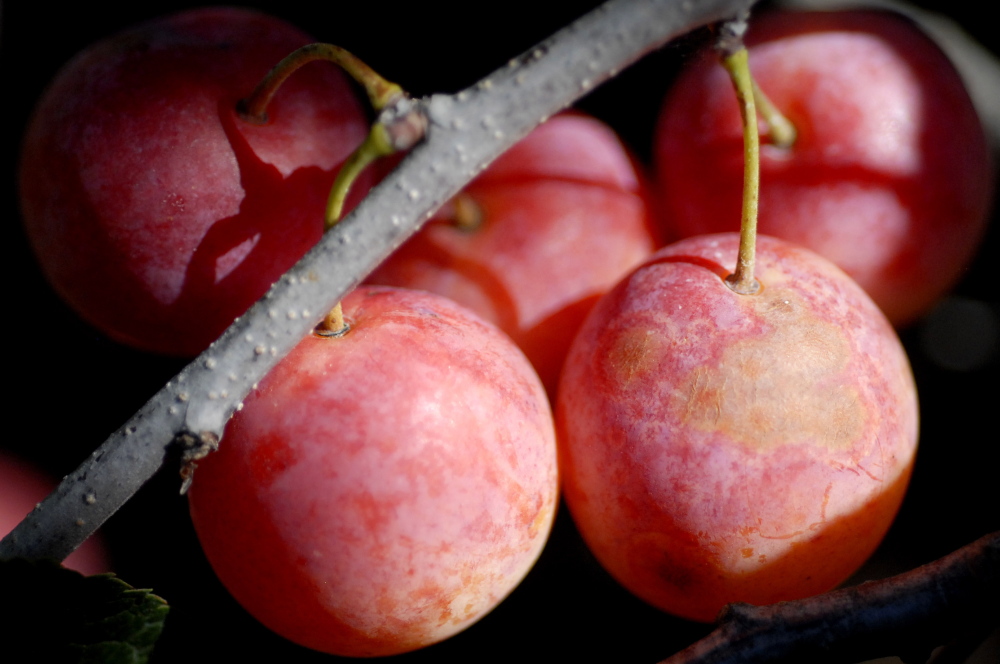Gardeners who wants to get the most nutrition out of a piece of property might grow peas, tomatoes and corn. But they also will have to grow – and eat – some things that the average shopper at Hannaford likely has never heard of.
Sometimes the problem with a plant is not growing it but figuring out how to prepare it, said Aaron Parker, a landscaper who three years ago opened Edgewood Nursery, specializing in unusual plants, including many suitable for permaculture designs.
Parker will speak on edible landscaping Sept. 27 in the kitchen tent at the Common Ground Fair. His home, which he shares with partner Eva Writt and daughter Amina Writer, is an excellent example of edible landscaping and permaculture design. Not all of the plants are edible, but they all have a purpose – and usually more than one.
Permaculture is a method of design that incorporates principles of natural ecosystems and can help make people and their homes as independent as possible, without using fossil fuels or goods from a great distance away. Food-producing perennial plants, which are planted once and require little care, dominate. The annual vegetables that people are often more familiar with must be planted each year, requiring soil amendments and more tending.
An example of the type of plants Parker advocates is Toona sinensis, also called Chinese toon or Chinese mahogany.
“It’s supposed to be big in Szechuan cuisine, but I don’t know Szechuan cuisine,” he said.
Parker gave me a leaf from the plant. It was substantial, fairly crisp and had a spicy and floral taste, with a hint of onions. It provides a lot of edible leaves with little care, and the wood also can be used for furniture or other projects.
The Herb Society of America said that the shoots as well as the leaves can be eaten and often is used in stir fries and egg dishes. It also is used as an ornamental and can be grown as a single-stem tree or a multi-stemmed shrub. The hardwood can be used much as the more well-known mahogany from South America is used for furniture.
Another plant Parker likes is Hablitzia, or Caucasian spinach, because it produces edible shoots right after the ground thaws, when you aren’t getting anything else in the garden. It can be used anywhere you would use spinach – in salads, pizza, quiche and other dishes.
Crambe maritima, or sea kale, is a good plant, Parker said, because you can use it in so many ways. It has a nice leaf – a more astringent flavor than the Toona – and he uses it like collards. The flower buds are edible, a lot like broccoli. The seed pods look and taste like peas, he said.
Plus, it’s pretty. The sea kale received the Royal Horticultural Society’s Award of Garden Merit as an ornamental.
While these plants are productive and unusual, Parker said his favorite food crops are fruit trees. He generally urges clients to stay away from apples in the home garden because they attract so many pests, but there are alternatives, from the fairly rare native paw paw tree to the more common peaches and plums.
When you visit Parker’s home, the crops you see first are annual vegetables. Annuals require more tending than the perennial crops, so you want them close to where people spend the most time, according to principles of permaculture. In his case, they are by the path between where cars are parked and the entrance to the house.
One attractive but inedible plant on the property is castor bean, which is poisonous and, despite its name, not a true bean. The mulch in Parker’s garden attracts voles and castor beans are supposed to repel them. They didn’t, but he likes the striking architectural red foliage and bright fruit.
Parker owns five acres, but only a bit more than an acre is cleared. He uses a lot of wood chips and leaves as mulch. And while he could rake leaves out of the woods for use in his beds, he finds it easier to pick up leaves that people have left out on the streets of Portland. He uses compost when he establishes his beds for perennial plants and some compost most years on his annual beds – but no other garden amendments to provide nitrogen or other elements. By picking plants that are self-sufficient and more able to get along on the soil as it exists in the garden, he has to depend less on products imported from off his property, or perhaps from many miles away.
He does keep chickens and ducks, but he dislikes that they sometimes scratch up his mulch and vegetables. He tried Guinea fowl but got rid of them. “They are loud and obnoxious,” he said.
From talking with Parker, I learned that my own gardens are home to about 100 food plants that I have never tasted. That would be all the hosta Nancy and I grow as an attractive foliage plant. Snap off the shoots before the leaves start to unfurl, and they are a tasty vegetable. Steam or boil them and serve with a miso mustard. Or roast them after steaming and wrap prosciutto around them.
Now I know that if the economy tanks, we can just start eating the hosta.
Tom Atwell has been writing the Maine Gardener column since 2004. He is a freelance writer gardening in Cape Elizabeth. He can be contacted at 767-2297 or tomatwell@me.com.
Send questions/comments to the editors.




